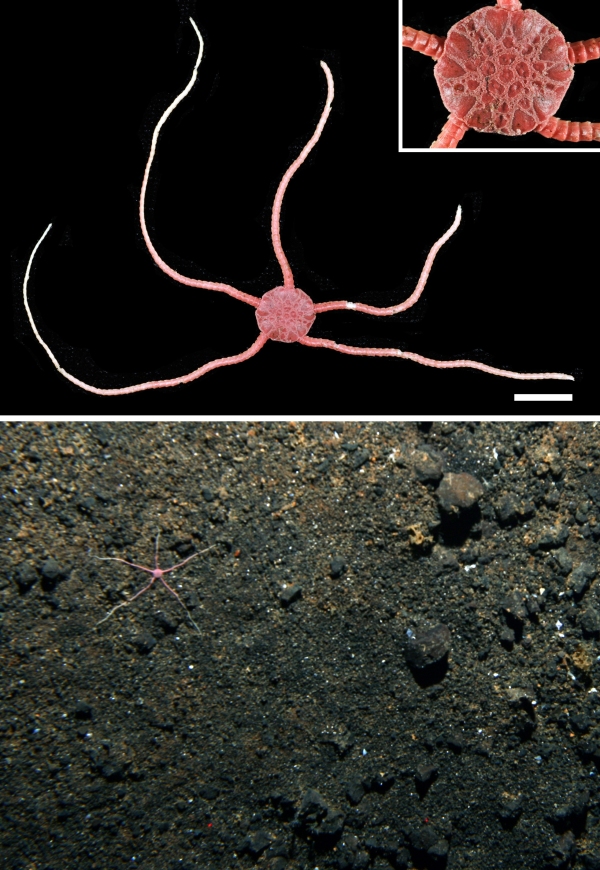This week we bring you a species that puts the ‘brittle’ into brittle star: the beautiful and fragile Ophioleuce brevispinum, described by the New Zealand echinoderm expert Hubert Lyman Clark in 1911 (1, 2).
This species, and the other species in the genus Ophioleuce, have extremely thin and delicate arms and discs and are pretty rare in our collection. The species name brevispinum means “short spine” and refers to its two short armspines (2). It is known to occur in deep waters - 850-1930 metres in depth - to the north of New Zealand, from the Bay of Plenty to the seamounts along the Kermadec Ridge.
This particular beauty was photographed during the 2012 Vulnerable Deepsea Communities programme voyage to the Clark Seamount, on the southern Kermadec Ridge at 920 metres depth. Its disc is about 5mm in diameter, and their distinctive pink disc, fading to white at the arm tips, makes them stand out against the volcanic gravel on the flanks of the seamount.
A closely related species, Ophioleuce regulare, is found in the Ross Sea (Antarctica), Macquarie Ridge south of New Zealand, and southern Australian waters (3).
This genus once belonged to the family Ophioleucidae, which is now designated as a subfamily of the large Ophiuridae family. Now considered the subfamily Ophioleucinae, its members are widespread in the major oceans of the world, with five living genera which are all characterised by long, slender arms, a few small armspines, a regular series of oral papillae (like small square teeth) along the margin of the jaws, and discs decorated with granules or small spines. References: (1) http://www.marinespecies.org/ophiuroidea/aphia.php?p=taxdetails&id=243708 (2) “North Pacific ophiurans in the collection of the United States National museum, by Hubert Lyman Clark (1911). The description of the species we know today as Ophioleuce brevispinum can be found on page 98: http://dx.doi.org/10.5962/bhl.title.1324
(3) http://researchdata.museum.vic.gov.au/brittlestar/www/o_regul.htm

